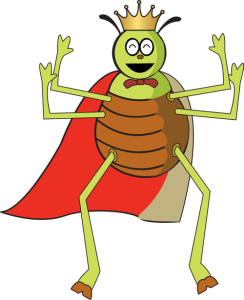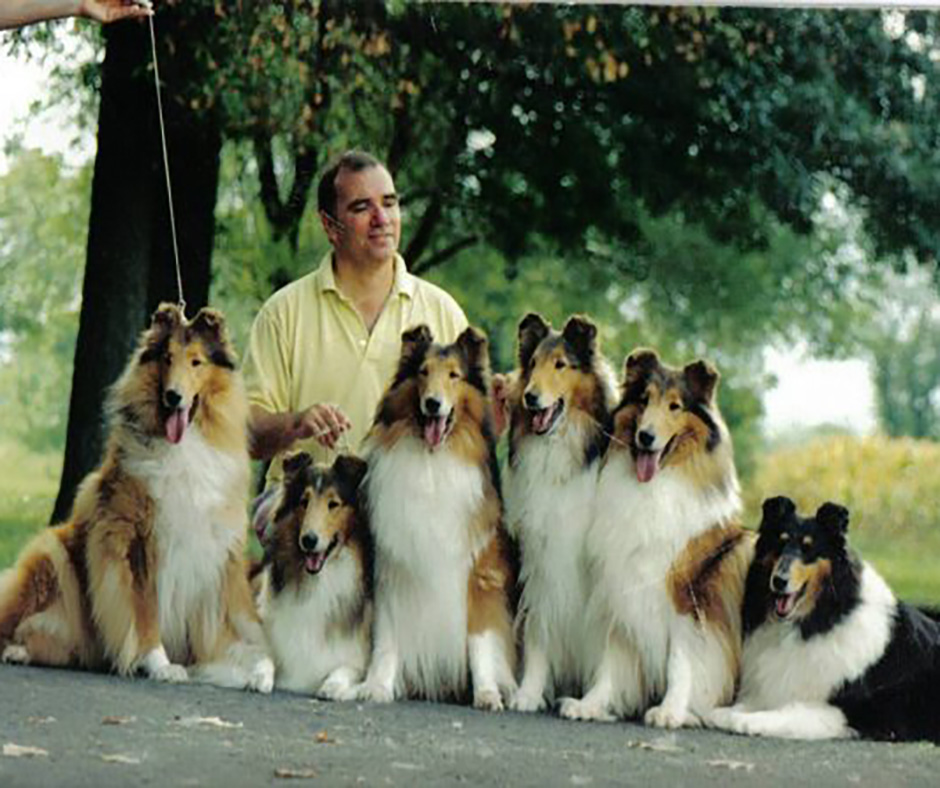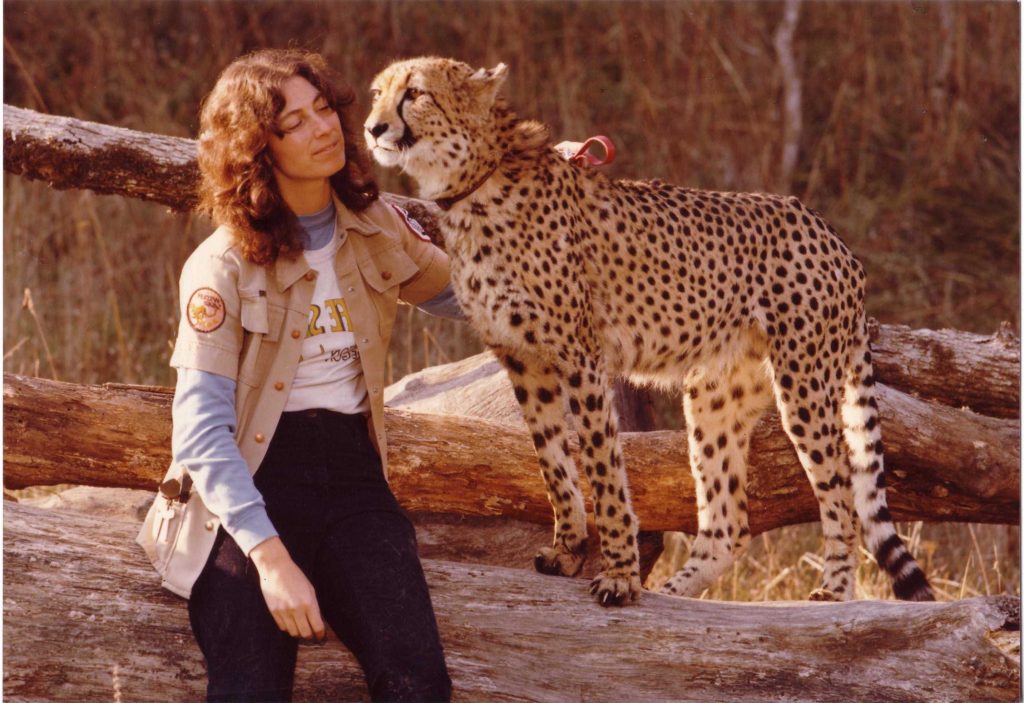330 – Breeding Rules from John Buddie, Tartanside Collies
Breeding Rules from John Buddie, Tartanside Collies
John Buddie has spent a lifetime with Collies. His Tartanside family of dogs is world-famous and widely respected. His Breeding Rules are a distillation of more than 50 years of experience and success. This is part one of a two-part series.
Buddie’s original breed mentor gave him much of the knowledge he continues to share today.
“This was mentorship in the days of letter writing, plus weekends spent doing kennel chores, brushing dogs, really hands on work,” Buddie said. “When I asked a question, she would ask me a question to make me think.”
Spoon-feeding someone an answer doesn’t have the same impact as helping someone come to their own conclusion, Buddie observed.
Buddie’s “rules” are guidelines that are applicable across breeds and generations.
*Leave the sport/breed no worse than you found it
Show respect for the lines and breeders who came before by preserving that quality.
*The number of champions finished/ribbons earned is not the measure of a breeder
“There have been many important contributing breeders who changed the face of a breed who bred on a small scale,” Buddie said. “For every record achieved there will always be someone who can break that record.”
*Learn to read a pedigree
Research, look to breeders of the past, learn what they accomplished and how.
*Look to the grandparents
Most top producing dogs are just carrying the pedigree forward. Top sires, often the strength comes from dam side.
“I’ve had great success using the Maternal grandsire effect, in other words breed a quality bitch to her maternal grandsire,” Buddie said.
*You can never outrun a problem
“It’s a lot easier to rid yourself of problems with testing now. But you have to admit the problem and deal with it. It can mean scrapping a couple generations of breedings to clear it out. But you have to protect your breeding program as a whole.”
*Learn to see quality in other people’s dogs
“We make evaluations of dogs when we’re competitors… when you’re judging you realize you weren’t as open-minded as you thought you were.”
*Attend national to see dogs that you wouldn’t see any other time
Join us next week for the continuation of this fabulous conversation.
329 – Dogs Saving Cats: Livestock Guardians and Cheetahs
Dogs Saving Cats: Livestock Guardians and Cheetahs

Dr. Laurie Marker with one of the Livestock Guarding Dogs bred and raised by the Cheetah Conservation Fund to give farmers in Namibia safety for their flocks.
My very special guest today is Dr. Laurie Marker of the Cheetah Conservation Fund. We discuss her work with Cheetahs and “dogs saving cats”… dogs as “emotional support” animals for Cheetahs raised in captivity, as livestock guardians for flocks in Namibia so the farmers don’t kill the Cheetahs who might otherwise prey on their stock, even dogs tracking down “scat” for research.
I first met Marker some 40 years ago when she was working in my hometown at the Wildlife Safari. What an incredible opportunity this conversation was!
LGD Program began in 1994
“We decided to celebrate the program anniversary by naming 2019 the Year of the Livestock Guarding Dog. The program holds a special place in my heart. It has been incredibly successful at mitigating human/wildlife conflict not only in Namibia but across the cheetah’s current range,” Marker said.
“Anatolian shepherds were chosen for many reasons,” Marker notes on the organization’s website. “The breed has a 6,000-year pedigree and history of guarding sheep in Turkey. Their short coats protect them from thorns and bushes being caught in their coats, and make it easier for them to adapt to fluctuating temperatures – both hot and cold. Their independent nature and ability to think for themselves means they don’t need to have people with them to successfully guard their livestock. They were the best choice for the conditions faced on Namibian farmlands. They have the will and drive to travel vast distances with their herd due to their natural loyalty and endurance.
In February, 1994, four Anatolian shepherds, the breed of dogs used in the research that took place in Oregon, were established with herds of sheep and goats here in Namibia. The dogs were donated by the Birinci Kennels in the USA.”
Endangered species and endangered breeds
The LGD program has since placed close to 700 dogs with farmers in and around Namibia. Marker said she has seen a dramatic decrease in the number of big cats killed to protect livestock and a stabilization of the numbers in this critically endangered species. Fewer than 7500 Cheetahs are believed to exist in the wild.
Listen to the podcast for more of this outstanding discussion.
Amazingly, genetic diversity concerns of the same kind we face with purebred dogs are also an issue for these unique big cats. Learn more about Marker’s Cheetah Studbook!
328 – Poopy Happens: Puppy Diarrhea Causes and Treatments
Poopy Happens: Puppy Diarrhea Causes and Treatments
Puppy diarrhea can be serious and dangerous due to dehydration risks, says Dr. Marty Greer, DVM. While “poopy happens” is a pretty common issue in a litter of puppies, some causes are more serious than others.
Causes of “bad potty” can range from the benign to the deadly and knowing which is which and how to treat them can be a matter of life and death.
“I can’t believe I ate the WHOLE thing….”
Overeating is pretty common, particularly when puppies transition to solid food during weaning.
“While nursing, the diarrhea is white in color, and the puppy is very hefty,” Greer said. She strongly recommends dog specific probiotics during weaning, particularly Proviable or Fortiflora.
“What do you have in your mouth?!”
Eating inappropriate stuff like rocks, sticks, leaves is another common problem in puppies that can cause stomach upset and loose stools. Since puppies are curious and often investigate their new and expanding world with their mouths, it can also be dangerous! Watch what they pick up and police their areas for hazards.
All kinds of bad bugs
Viral infections such as parvovirus and distemper are life threatening emergencies. Certain breeds don’t titer well to parvo vaccines and these diseases can even be transmitted by raccoons in “latrines.”
Parasites, Greer noted, affect as much as 95 percent of puppies. Worm puppies at 2, 4, 6, 8 weeks if the bitch is not on dewormer *during* pregnancy. Greer recommends a specific protocol of treating the pregnant bitch with fenbendazole daily from the 5th week of pregnancy to the 2nd week of lactation.
“You can worm bitch forever, but parasites will encyst in her muscles,” Greer said. “The stress of pregnancy and lactation reactivates these into her bloodstream. The parasites are then passed through placenta AND milk to the puppies. Puppies that are still nursing, are still receiving the larval form of the parasite through milk.”
Giardia and coccidia are common in puppies. Giardia responds to Panacur. Coccidia responds to Albon.
Cleanliness is next godliness
Bleach is my favorite disinfectant. Visit this site to learn about proper dilution in different scenarios: https://www.aspcapro.org/resource/bleach-dilution-calculator
Treatment
Kaopectate, the human-grade over-the-counter item, has changed the formula and metabolizes as aspirin in the dog, Greer said. She strongly recommends a low-cost and effect solution, the original kaolin-pectin.
And don’t forget to send your puppies home with insurance!!
327 – MORE on Preserving Our Breeds. What can WE do?
MORE on Preserving Our Breeds. What can WE do?
Today we have more lively conversation. Pure Dog Talk’s host Laura Reeves moderates part 2 of a Saturday Symposium panel discussion at the Rogue Valley Kennel Club show on the topic of “Preserving Our Breeds. What can WE do?”
Panelists are Ed Thomason, professional handler and noted breeder of American Staffordshire Terriers; Michelle Santana, AKC Breeder of the Year of Doberman Pinschers; and, Fran Stephens, Saint Bernard breeder-judge and AKC delegate for Puyallup Valley Dog Fanciers.
The panelists discuss a recent presentation to the delegate body by Bill Shelton and Doug Johnson among other areas of interest in which purebred dog fanciers can promote their breeds and purebred dogs in general.
Reach out to the community
“Quit blaming other people,” Reeves said. “WE need to step up and not just on Facebook, all social media is important. All breeders are on the same side. We don’t have to like how other people breed. We can help them do better. Help them improve.”
Thomason agreed. “Some of the greatest breeders in this country that ever bred dogs kept and housed over 100 dogs. Why wouldn’t we help these commercial breeders breed better dogs.
“We don’t breed enough dogs. It’s as simple as that,” Thomason said.
Go out in public with your dogs
Stephens related her all breed club’s struggle to get club members to come share their dogs at the Washington state fair on Labor Day weekend.
“We have a barn and booth space from PVDF,” Stephens said. “We see *hundreds of thousands* of people, families with children. come to see the dogs… It’s like pulling teeth to get club members to come. Go, take your dogs to public events. Put your dogs out in public so people can see you. Then breed more dogs.”
Audience member Ray Brinlee, who started showing dogs in 1959, noted that the ’73 oil embargo is what brought on dog show clusters in order to save gas. “It was a terrible mistake,” Brinlee said. “Dog shows need to serve the community.”
Just Be NICE!
An audience member, Rebecca, recounted her own efforts to educate clients who hire her for behavioral training of their dogs.
“When I recommend they come to a show and talk to people, the breeders start with why they shouldn’t own this breed,” Rebecca said. “It took *15* years to talk someone into selling me a show dog. It frustrates me that my clients go to people with no health testing on their dogs because those people are nice to them. It’s sad that we have to tell people to make friends in other breeds and get a thick skin. Hardest thing to be a new person, and you don’t know who you can go to…”
“The main thing we need to keep in mind,” Stephens said, “is we have to keep breeding our dogs. Our breeds. If we don’t, they’ll go away. It’s as simple as that. Deciding to spay/neuter everything not in your control is detrimental to the breed. The dog may have a fault you don’t want, but may have good qualities from your line that can complement someone else’s lines. We have shot ourselves in the foot by spay/neuter more than 50% of our litters.”
Borzoi breeder Kristina Terra ended the discussion with a positive idea. When members of the public as if one of her dogs is a rescue, she replies “No! In fact she hasn’t had a bad second in her life. And neither has her mother or grandmother…”
326 – Preserving Our Breeds. What can WE do? Discussion pt. 1
Preserving Our Breeds. What can WE do?
Pure Dog Talk’s host Laura Reeves moderates a Saturday Symposium panel discussion at the Rogue Valley Kennel Club show on the topic of “Preserving Our Breeds. What can WE do?” This is part one of the discussion. Part two will post next week.
Panelists are Ed Thomason, professional handler and noted breeder of American Staffordshire Terriers; Michelle Santana, AKC Breeder of the Year of Doberman Pinschers; and, Fran Stephens, Saint Bernard breeder-judge and AKC delegate for Puyallup Valley Dog Fanciers.
The panelists discuss a recent presentation (watch the entire presentation here) to the delegate body by Bill Shelton and Doug Johnson among other areas of interest in which purebred dog fanciers can promote their breeds and purebred dogs in general.
“Tell our story”
“We have fallen into hiding the fact that we’re breeders,” Thomason said.
“Don’t be afraid to say I breed purebred dogs because I’m want to know what I’m going to get,” Stephens said.
“We have allowed doodle breeders to become a fad,” Thomason said. “You go underground because you have more dogs than you’re supposed to. But on social media, you can promote your breed, your breeding program without telling where you live.
The pet puppy market is a billion dollar industry. Not saying leave here and be puppy mills. Market being manipulated by doodle breeders and rescues. We don’t share our stories. We have to or this ain’t going to be here.”
Education is critical
Santana discussed her goal of educating John Q Public.
“I picked a random pet Doberman social page,” Santana said. “Thousands of people who own a companion Doberman. They need education. Any time I come across an educational article I share to that page. Spay/neuter as an example. Just pick one site that doesn’t get a broad spectrum of education and share to that page. We need to spread this information to people not in our circle. We’re myopic. We can talk to ourselves all we want. But we need to reach out to these people outside our circle.”
Stephens noted that there is a vast market for dogs in this country that is largely being filled by doodle breeders and rescue imports.
“There are plenty of people wanting dogs,” Stephens said. “It’s how we reach them. How we talk to them.”
Join us next week for Part 2 of the discussion!!
325 – Dog Judging, Rumors and Reality Checks
Dog Judging, Rumors and Reality Checks
AKC judge Lee Whittier, founder of Dog Show Mentor and a former AKC Field Rep, and host Laura Reeves talk turkey about judging, judges, the process and the results.
Some of the key take-aways from the conversation:
- Judges are not all created equal. Some ARE better than others.
- Judges WANT and TRY to do a good job.
- Judges spend a LOT of time, money and grief to earn the honor of presiding from the center of the ring. Check out the YouTube video of the PureDogTalk Friday Night Forum panel discussion. Current AKC Executive Field Representative Bryan Martin, and AKC judges Brian Meyer and Sylvie McGee share a TON of information about the process of becoming an AKC approved judge.
- What a judge sees in the center of the ring is often WAY different than what you see outside the ring. When you see a dog week in and week out, the accumulated knowledge may, in some cases, create a different picture than what the judge has during his/her 2 minutes in the ring.
- Judges are NOT hatched from an egg! I say this all the time at the panel discussions. I think exhibitors forget this part. All judges started at basically the same place you are today. They showed dogs, they bred dogs, they schlepped the gear and scooped the poop, they drove the miles and slept in the sketchy hotel rooms. Every single judge in the ring has been there, done that and most likely a whole lot more.
- Lee and I agree that we risk accusations of being a bit Pollyanna and acknowledge that bad apples exist, but that we, the exhibitors, should not allow them to spoil the whole basket.
- Exhibitors will get the most enjoyment from their dog show experiences if they choose a positive social group, do a little research about their judges and try not to get wrapped up in the rumor-mongering when it happens.
Make sure you download and listen to the episode for more “inside insights”
324 – Veterinary Voice: Allergies! Food, Inhalant, Fleas & More
Veterinary Voice: Allergies! Food, Inhalant, Fleas & More
Food allergies are not as common as people believe, according to veterinarian Marty Greer. Inhalant, contact and flea allergies are more prevalent. Food allergy is mostly associated with chronic ear infections and recurrent skin problems. Conclusive diagnosis requires tedious food elimination diets.
“Fall is a terrible time for allergies,” Greer noted. “Especially inhalant allergies and contact allergies of pollen in the grass. You can wash the dog’s feet at night to help reduce symptoms.”
Foot chewing is the top symptom for inhalant/contact allergy, Greer said. She also observed that allergies can also be additive. A dog may have a food allergy that is only triggered by the addition of a seasonal contact allergy, for example.
It only takes one!
 Flea allergy is signaled by dogs that are itchy around the rump, Greer noted. She added that one flea bite is all it may take to set off an allergic response.
Flea allergy is signaled by dogs that are itchy around the rump, Greer noted. She added that one flea bite is all it may take to set off an allergic response.
“Flea control products today are really good. Topical or oral, they are very effective. Vacuuming regularly is an important control system for fleas,” Greer said.
Newer flea/tick control products affect the nervous system of only the parasite, Greer said. Older organophosphate-based products were not as good, she added.
Pro/Con of flea/tick preventatives
Oral meds are not recommended for patients with a history of seizures, Greer said. “They are not going to make a normal dog have a seizure. But they could trigger seizure sensitive dogs. Bravecto is the only oral medication labeled for breeding dogs,” she added.
Advantages to the oral preventatives are that they leave no residue on coat, Greer said. The advantages of topical treatments is they are not a concern in seizure sensitive patients and they make a repellant shield to biting insects. Topicals also get rid of fleas/ticks more quickly.
Anti inflammatory treatments
“In the last 10-15 years, new products have come on the market to help to replace long-term steroid use,” Greer said. “Short course steroid use is effective and the side effects are minimal.”
Links and information from Dr. Greer to learn more:
- Atopica https://www.elanco.us/products-services/dogs/atopica-cyclosporine-capsules-usp-modified Dog Quiz: https://us.atopica.com/survey-dog , Cat Quiz: https://us.atopica.com/survey-cat
- Apoquel https://www.zoetisus.com/products/dogs/apoquel/index.aspx
- Cytopoint https://www.zoetisus.com/products/dogs/cytopoint/the-itch-cycle.aspx
- Do not use APOQUEL in dogs less than 12 months of age or those with serious infections. APOQUEL may increase the chances of developing serious infections, and may cause existing parasitic skin infestations or pre-existing cancers to get worse. APOQUEL has not been tested in dogs receiving some medications including some commonly used to treat skin conditions such as corticosteroids and cyclosporine. Do not use in breeding, pregnant, or lactating dogs. Most common side effects are vomiting and diarrhea. APOQUEL has been used safely with many common medications including parasiticides, antibiotics and vaccines
- CYTOPOINT is a monoclonal antibody (mAb)* treatment for dogs that specifically targets and neutralizes canine IL-31,† an important cytokine‡ involved in sending the itch signal to the brain in chronic atopic dermatitis2
- Because it is highly targeted to a specific cytokine involved in canine atopic dermatitis, CYTOPOINT has minimal impact on normal immune functions3
- CYTOPOINT is eliminated via normal protein degradation pathways in the same way as naturally occurring antibodies; metabolism does not involve the liver or kidneys
323 – Marketing Strategy Ensures Viability of Endangered Breed
Marketing Strategy Ensures Viability of Endangered Breed

Dandie Dinmont Terrier
Jody Moxham is a Dandie Dinmont Terrier fancier and a globally successful marketing professional. She was asked by her club to create an ad for the breed. She refused. And created far more than just an “ad.”
DDTCA created the Strategic advisory committee, which Moxham chairs, exclusively dedicated to ensuring the long-term viability of the Dandie Dinmont Terrier.
Surging numbers
In three years, the work of the committee has increased registrations of the breed by more than 150 percent. Membership in the club is surging to the point it can’t keep up with printing the membership roster, Moxham noted. According to AKC statistics, the breed has risen six points in popularity after years of decline.
“I asked myself, ‘How would best marketers address this.’ There is a thing called the product life cycle in marketing,” Moxham said. “A lot of breeds are in the “decline” phase…. Marketers reposition a “product” and put it back in to introductory stage. That’s what we’re doing.
Product marketing techniques
“I created a methodology for forecasting success of marketing communications while they were just ideas on paper. We marketed it to multi-national corporations and helped them strengthen the persuasiveness of their strategies and their communications. We were proven effective in 40-some countries, according to the tough measures marketers use. A month after 9/11, the US Government called and asked if we would be willing to see if the methodology that worked so well in the commercial world could also work for national security interests. We gained contracts from across all arms of the USG – Defense, Military, Intelligence, and State.
“It has been a fascinating journey. What drives me is making a difference. I thrive on doing things that have never been done before. Or that are super tough. Easy can be done by anyone. Really hard piques my interest.
“We will not stay vulnerable”

Betty-Anne Stenmark and Jody Moxham bred Dandie Dinmont Terriers together for many years.
“That is the background that I brought to tackling the objective of ensuring the viability of the Dandie Dinmont Terrier for generations to come. You probably know we are a highly vulnerable breed. But we will not stay vulnerable.
“We started this program three years ago and formed the Strategic Advisory Committee as an action arm of the DDTCA.
“The first of four surveys has been released, each dealing with a specific area of breeding and raising healthy litters. Collectively they will be the foundation for mentoring programs for DDTCA and other breed clubs that want to use our findings. We want the DDTCA to be known as the innovator of support programs for breeders … and as a sponsor of best breeding practices.”
To learn more about the DDTCA visit: https://www.ddtca.org/
To hear the conversation with legendary Master Breeder Betty-Anne Stenmark about the Dandie Dinmont Terrier and its “gene puddle,” click to listen here.
322 – The Winning Edge! Panel Discussion With the Masters
The Winning Edge! Panel Discussion With the Masters
Host Laura Reeves moderates a Friday Night Forum Panel Discussion on the topic of the “Winning Edge” with Judges Rick Gschwender and Pluis Davern and Professional Handler Bill McFadden.
It is not the judge’s job to find a “diamond in the rough,” Reeves posits. “Polish your “gem stone” for your best chance of success.”
Good habits
 Gschwender starts the discussion by asking the audience about their habits with the dogs they exhibit.
Gschwender starts the discussion by asking the audience about their habits with the dogs they exhibit.
“How many of you train your dog? Road work him? Take video to see what the judge sees? Clean their teeth?” Gschwender queried. “I see people all the time, they’re paying $30 to enter the dog and haven’t even cleaned teeth.”
Gschwender adds, “Watch the judges. If you pay attention, you will see consistency in what they put up. You might not like it, but you will figure out what I like and come back and show that to me.”
Motivated by motion
Davern noted, in a fascinating observation, that people are *predators.* Which means “we are motivated by motion. What are judges looking at?” Davern asked rhetorically. “Motion. It catches the eye. You can *subtly* move your hand to show a pretty head, for example.
“You’re in the ring, you’re all showing the same “product.” There’s 20 boxes of cornflakes. What makes yours better than the others?”
Owner handlers have a huge advantage, Davern said. They are spending time with the dog they love.
“This is a great sport! Nobody takes a golf club to bed at night,” Davern said. “Life is not all about winning.”
Be prepared
“Take a deep breath and don’t rush,” McFadden advises. He also notes that in some cases, owner handlers who are long time breeders are “experts showing to novices.” Judges are life-long learners and may be new to a breed. “Present your breed the way it should be shown.”
 Most importantly, McFadden said, be prepared. “Make sure your dog is in condition, physically, mentally, emotionally.”
Most importantly, McFadden said, be prepared. “Make sure your dog is in condition, physically, mentally, emotionally.”
“You’ll have successes and failures you deserve and ones you don’t. It happens to handlers too. We show 20 dogs and might win with two,” McFadden added.
For more insight from a couple of these panelists, you can listen back to:
https://puredogtalk.com/10-bill-and-taffe-mcfadden-live-at-akc-nationals-wisdom-wednesday-2/
https://puredogtalk.com/34-sussex-spaniels-hunt-tests-search-and-rescue-pluis-davern-tells-all-2/
https://puredogtalk.com/35-dogs-to-the-rescue-firefighters-first-responders-and-pluis-davern-2/
321 — Tricks Are for Show Dogs! Improve Focus in the Ring
Tricks Are for Show Dogs! Improve Focus in the Ring
Show Dog Prep School founder, Vicki Ronchette, provides tips for training tricks to show dogs to help them focus and have fun.
“Training tricks is fun,” Ronchette said. “People and dogs enjoy it more than they do training traditional exercises. It is relaxing. And it’s a good way for people to improve their mechanical training skills.”
Dogs get bored in the ring, Ronchette noted. Having a repertoire of tricks available helps dogs and exhibitors relax, she said.
Bonus, the dogs and handlers having fun makes a good impression on audience and serve as crowd pleasers. Note the phenomenal success of the “sit up” by the Sussex Spaniel, Bean, at the 2018 Westminster Kennel Club show.
Ronchette shared a few of her favorite “tricks” to teach clients that provide specific benefits to dogs and their performance.
Touch!
Target training is a favorite of Ronchette’s. She trains the dog to touch its nose to her hand.
“It’s so beneficial,” Ronchette said. “It’s easy to teach. And when you have a distracted dog, it gets their attention.”
Sit Pretty
Sit up and beg can be a controversial trick, as some feel it can be harmful to the dog’s back. Other trainers argue it is indispensable core conditioning that strengthens back muscles. Either way, that super cute “begging” for attention is a sure fire winner.
Get on top
Teaching the dog to get up on a big rock, grooming table or other high perch, Ronchette says, is a great confidence builder. “They need to own these behaviors,” she noted.
AKC’s Trick Dog program allows owners to put a fun title on the end of the dog’s name, Ronchette noted, helping them “get their feet wet in something other than conformation.”
To learn more about the origins of the Trick Dog program, take a listen to my interview with AKC’s Doug Ljungren, the program’s biggest advocate.
128|Doug Ljungren is Up to Tricks…Trick Dogs|AKC VP of Sports and Performance|Pure Dog Talk










